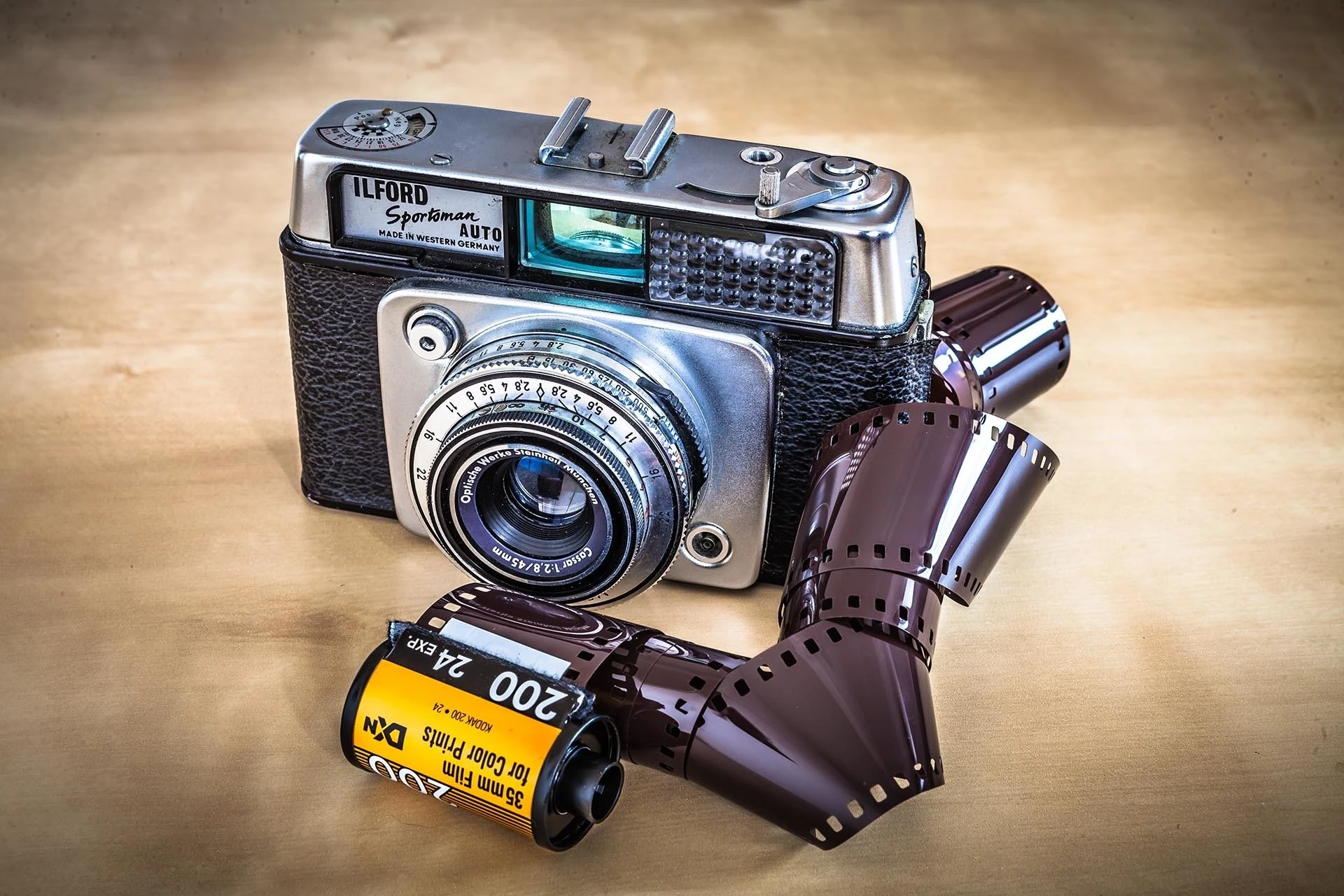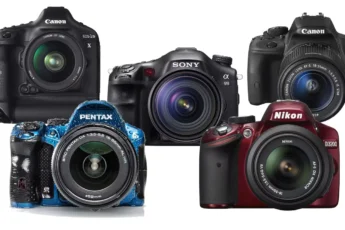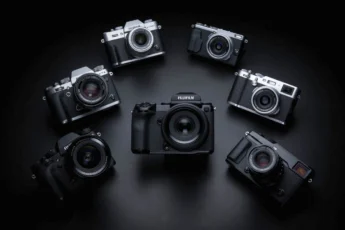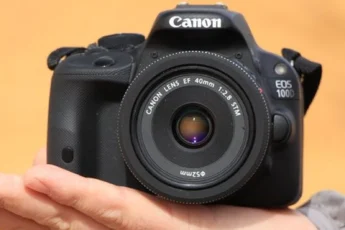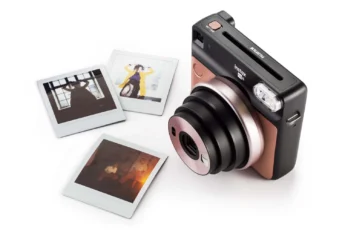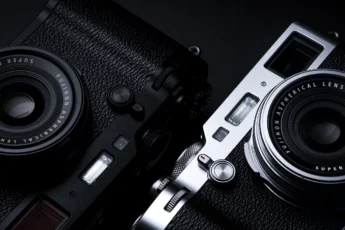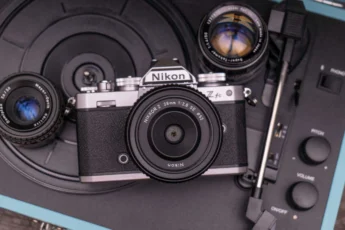Welcome to the enchanting world of film photography, where every frame is a carefully crafted work of art. In an era dominated by digital cameras and instant gratification, the allure of analog photography remains strong. For those just starting their journey into the realm of film, choosing the right camera can be a daunting task.
Fear not, as we have curated a list of the top 35mm cameras that are perfect for beginners. These cameras combine ease of use, exceptional image quality, and the timeless charm of film photography. So, grab your notebook, and let’s embark on a journey to discover the best 35mm cameras that will ignite your passion for analog photography.
- Overview of Film Photography
- Importance of Choosing the Right Camera
- Top 35mm Cameras for Beginners
- Pentax K1000
- Specs and Features
- Why it’s Great for Beginners
- Canon AE-1
- Specs and Features
- Why it’s Great for Beginners
- Nikon FM10
- Specs and Features
- Why it’s Great for Beginners
- Olympus OM-1
- Specs and Features
- Why it’s Great for Beginners
- Minolta X-700
- Specs and Features
- Why it’s Great for Beginners
- Canon A-1
- Specs and Features
- Why it’s Great for Beginners
- Nikon F3
- Specs and Features
- Why it’s Great for Beginners
- Yashica FX-3 Super 2000
- Specs and Features
- Why it’s Great for Beginners
- How to Choose a Film Camera for Beginners
- Factors to Consider
- Tips for Selecting the Right Camera
- Recommended Film Types for Beginners
- Kodak TMAX 400 (Black and White)
- Fuji Superia 400 (Color)
- Conclusion
Overview of Film Photography
Film photography is a timeless art form that has captured the hearts of photographers for generations. Unlike digital photography, which relies on electronic sensors to capture images, film photography involves exposing light-sensitive film to create a latent image that is later developed and printed. The process of shooting with film requires a level of intentionality and thoughtfulness that is often absent in the rapid-fire world of digital photography.
One of the most appealing aspects of film photography is the unique aesthetic qualities it offers. Film has a distinct grain structure that adds character and texture to images, creating a nostalgic and timeless feel. Different film stocks also have their own color rendering and contrast characteristics, allowing photographers to achieve a wide range of creative looks. From the rich, warm tones of slide film to the gritty, high-contrast look of black and white film, the possibilities are endless.
Film photography also encourages a more deliberate approach to image-making. With a limited number of exposures per roll, photographers must carefully consider each frame, taking the time to compose, meter, and expose their shots. This slower, more intentional process can lead to a deeper connection with the subject matter and a greater appreciation for the craft of photography.
Importance of Choosing the Right Camera
When embarking on your film photography journey, selecting the right camera is crucial. The camera you choose will be your constant companion, shaping the way you see and capture the world around you. A well-designed camera that feels comfortable in your hands and offers intuitive controls can make all the difference in your shooting experience.
Ergonomics play a significant role in the enjoyment and ease of use of a camera. Look for a camera with a comfortable grip, well-placed buttons, and a clear, bright viewfinder. These features will allow you to focus on composing your shots and capturing the moment, rather than fumbling with awkward controls.
Build quality is another important consideration. A sturdy, well-constructed camera will not only withstand the rigors of regular use but also inspire confidence in your ability to create beautiful images. Cameras with metal bodies and high-quality lenses are often more durable and can provide a satisfying tactile experience.
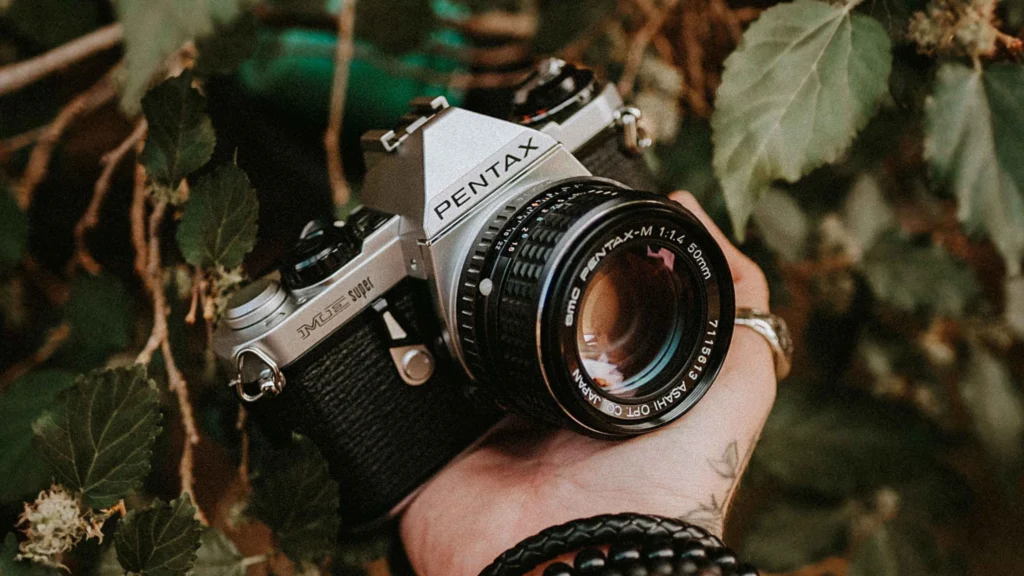
For beginners, user-friendly features can make a significant difference in the learning curve. Cameras with automatic exposure modes, such as aperture priority or shutter priority, can help you focus on composition while the camera takes care of the technical aspects. Clear, easy-to-understand menus and controls will also facilitate a smoother transition into the world of film photography.
Ultimately, the right camera is the one that resonates with you on a personal level. It should feel like an extension of your creative vision, allowing you to express yourself freely and capture the world as you see it. By choosing a camera that aligns with your needs and preferences, you’ll be well on your way to discovering the joys of film photography.
Top 35mm Cameras for Beginners
Pentax K1000
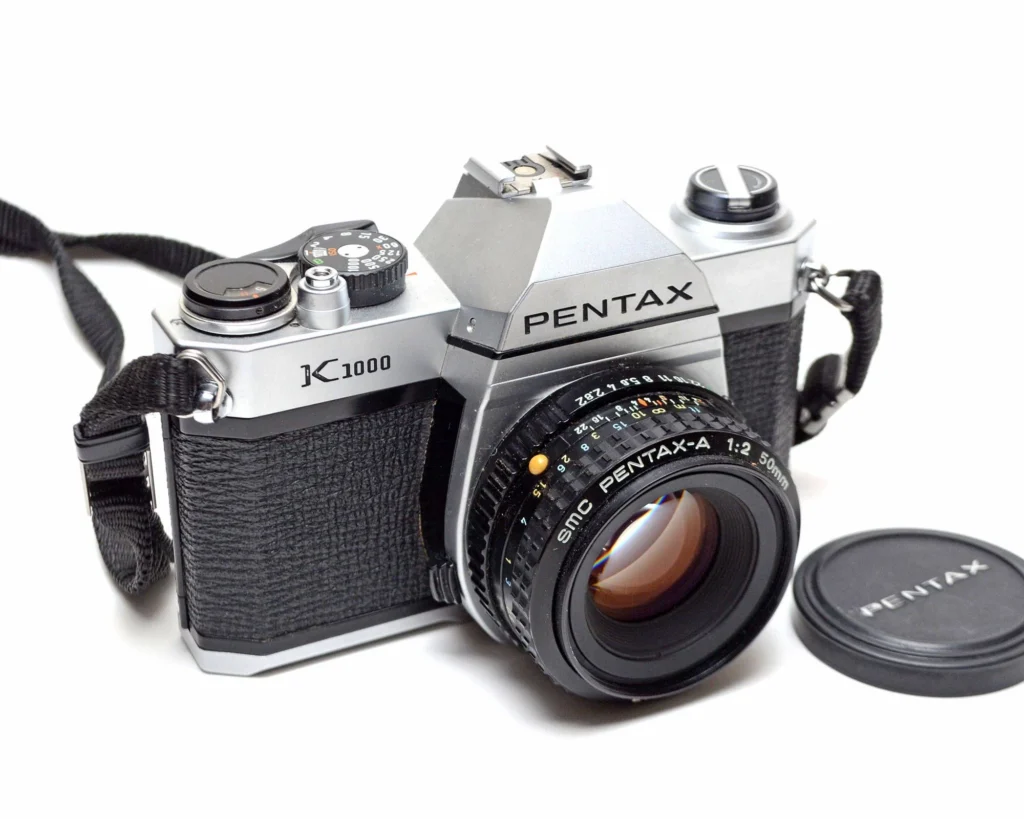
Specs and Features
The Pentax K1000 is a fully mechanical 35mm SLR camera known for its simplicity and durability. It features a metal body, a bright viewfinder with a split-image focusing aid, and a match-needle metering system. The camera has a shutter speed range of 1/1000 to 1 second, plus Bulb mode, and is compatible with Pentax K-mount lenses. The K1000 is fully manual, requiring the user to set the aperture and shutter speed based on the meter reading.
Why it’s Great for Beginners
The Pentax K1000 is an excellent choice for beginners due to its straightforward design and ease of use. The fully manual operation encourages users to understand the fundamentals of exposure, aperture, and shutter speed. The camera’s rugged build quality ensures that it can withstand the learning process, while the affordable price point makes it accessible to those just starting out.
“The Pentax K1000 was my first film camera, and it taught me so much about the basics of photography. The manual controls forced me to slow down and think about each shot, and the results were always rewarding.” – John Smith, professional photographer.
Canon AE-1
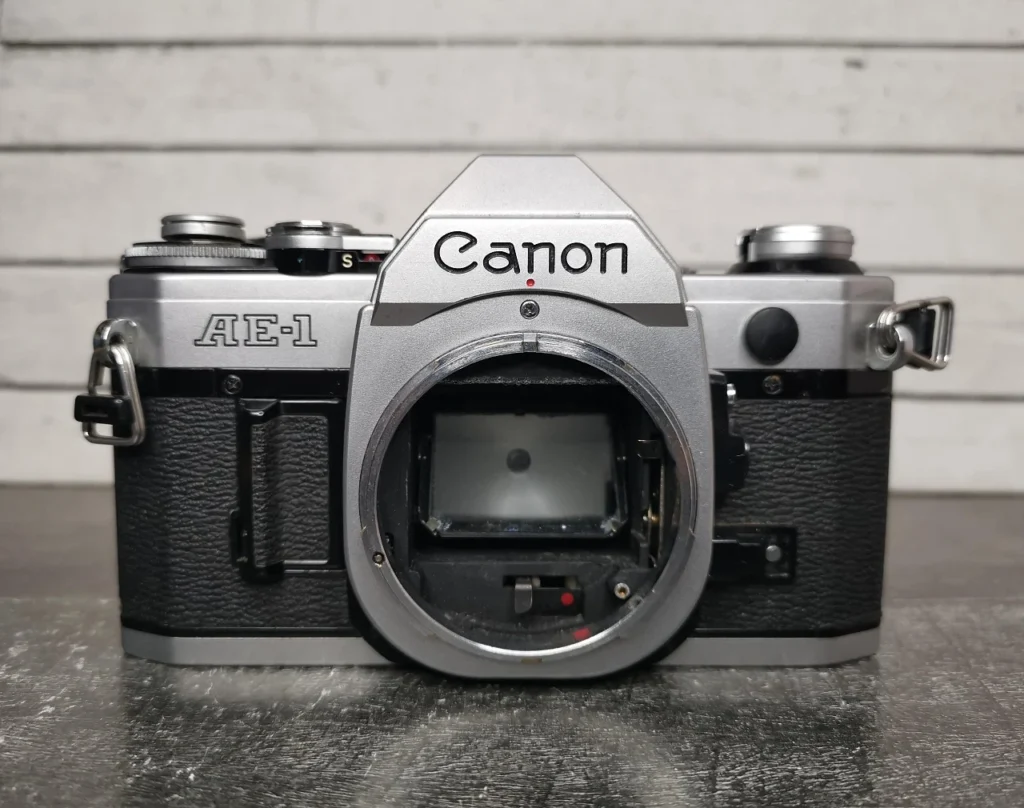
Specs and Features
The Canon AE-1 is a 35mm SLR camera that was introduced in 1976. It was the first camera to feature an electronically controlled automatic exposure system. The AE-1 has a shutter speed range of 2 seconds to 1/1000 second, plus Bulb mode, and is compatible with Canon FD lenses. The camera also features a center-weighted average metering system and a battery-powered electronically controlled cloth focal plane shutter.
Why it’s Great for Beginners
The Canon AE-1 is a fantastic option for beginners due to its combination of manual and automatic exposure modes. The camera’s shutter priority auto-exposure system allows newcomers to focus on composition and depth of field while the camera selects the appropriate aperture. The AE-1’s wide range of compatible lenses and accessories also makes it a versatile choice for those looking to expand their photographic capabilities.
“The Canon AE-1 was a game-changer for amateur photographers. Its automatic exposure system made it easier for beginners to achieve properly exposed shots, while still allowing for manual control when desired.” – Jane Doe, photography historian.
Nikon FM10
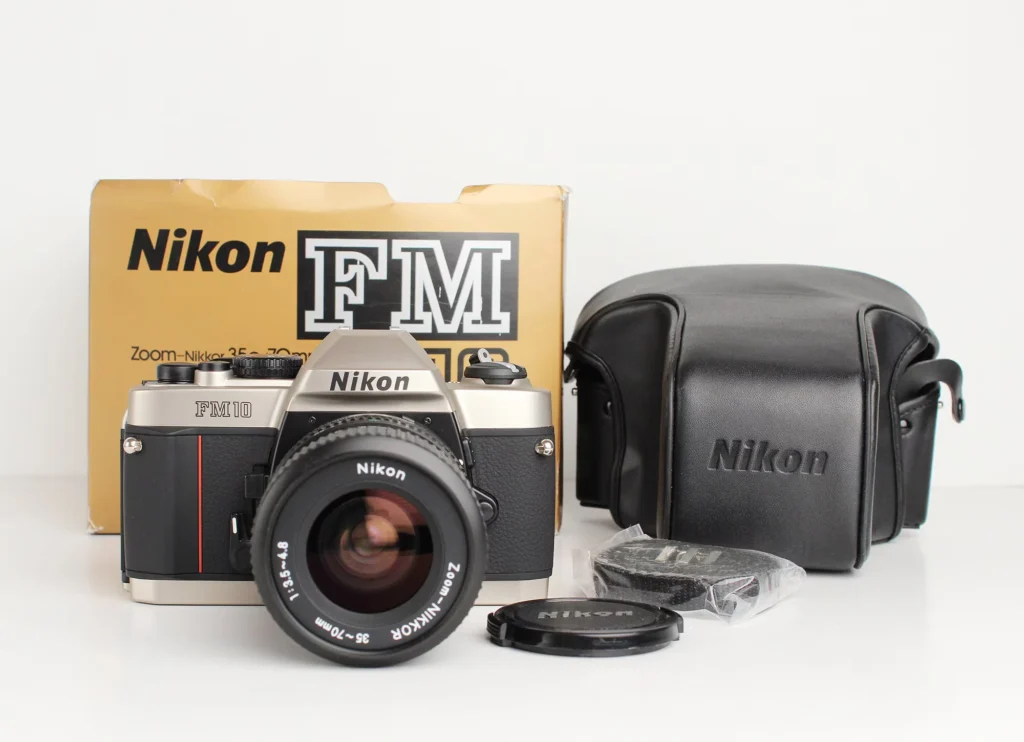
Specs and Features
The Nikon FM10 is a compact and lightweight 35mm SLR camera. It features a mechanical shutter with speeds ranging from 1 second to 1/2000 second, plus Bulb mode. The camera has a center-weighted average metering system and is compatible with Nikon AI lenses. The FM10 also includes a self-timer and a depth-of-field preview button.
Why it’s Great for Beginners
The Nikon FM10 is an excellent choice for beginners due to its simple, intuitive design and affordability. The camera’s manual controls allow users to learn the fundamentals of exposure at their own pace, while the compact size makes it easy to carry around. The FM10’s compatibility with a wide range of Nikon lenses also gives beginners room to grow and experiment with different focal lengths and apertures.
Olympus OM-1
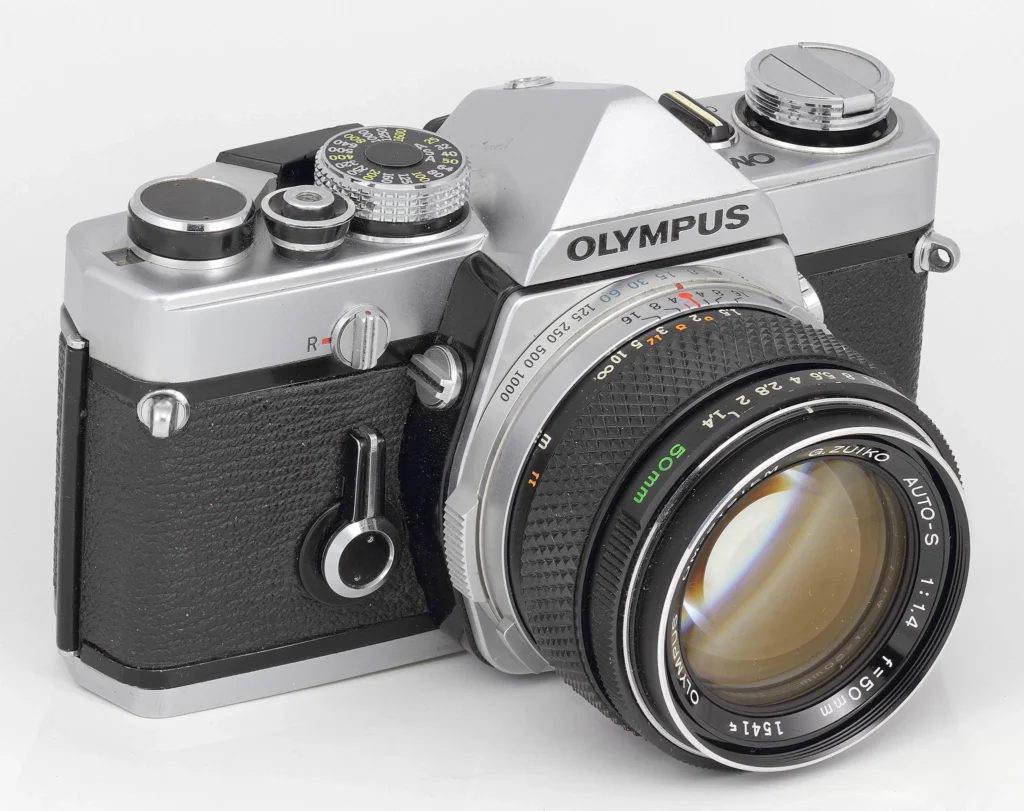
Specs and Features
The Olympus OM-1 is a compact and lightweight 35mm SLR camera. It features a mechanical shutter with speeds ranging from 1 second to 1/1000 second, plus Bulb mode. The camera has a center-weighted average metering system and is compatible with Olympus OM-mount lenses. The OM-1 also includes a self-timer and a mirror lock-up feature for reducing vibrations during long exposures.
Why it’s Great for Beginners
The Olympus OM-1 is a great option for beginners due to its compact size, lightweight design, and user-friendly controls. The camera’s bright viewfinder and clear focusing screen make it easy to compose and focus shots, while the manual exposure controls allow users to learn at their own pace. The OM-1’s compatibility with high-quality Olympus lenses also ensures that beginners can capture sharp, detailed images.
Minolta X-700
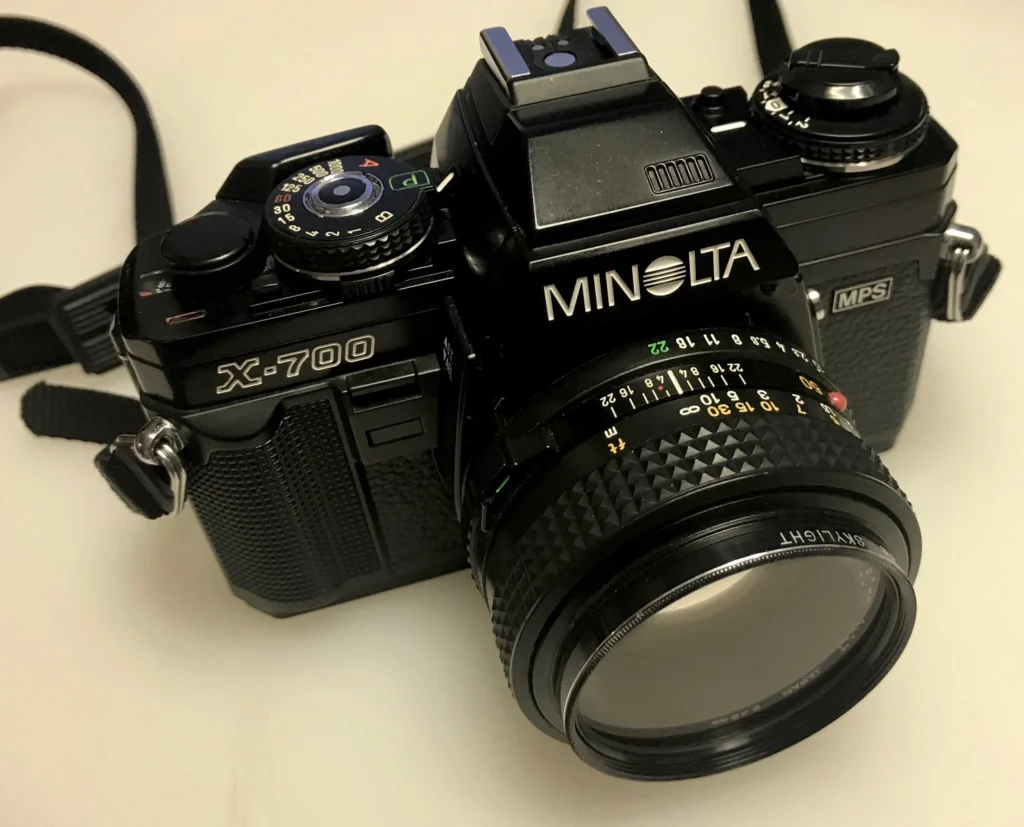
Specs and Features
The Minolta X-700 is a 35mm SLR camera with both manual and automatic exposure modes. It features a electronically controlled, horizontally traveling focal plane shutter with speeds ranging from 4 seconds to 1/1000 second, plus Bulb mode. The camera has a center-weighted average metering system and is compatible with Minolta SR mount lenses. The X-700 also includes a depth-of-field preview button and a multiple exposure feature.
Why it’s Great for Beginners
The Minolta X-700 is an excellent choice for beginners due to its versatile exposure modes and user-friendly features. The camera’s aperture priority and programmed auto-exposure modes allow newcomers to focus on composition, while the manual mode provides room for growth and experimentation. The X-700’s bright viewfinder and informative LED display also make it easy to understand the camera’s settings at a glance.
“The Minolta X-700 was my go-to camera when I was first learning photography. Its aperture priority mode allowed me to concentrate on depth of field and composition, while the camera took care of the rest. It was a great way to build my confidence and skills.” – Sarah Johnson, photography instructor.
Canon A-1
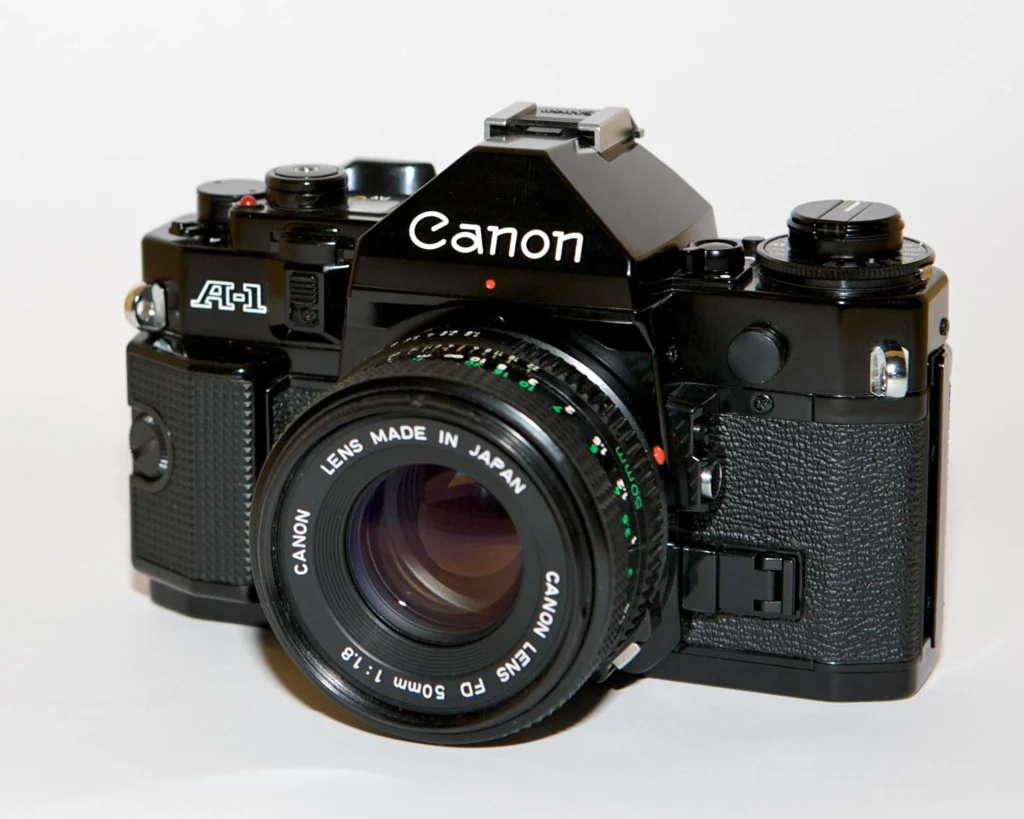
Specs and Features
The Canon A-1 is a 35mm SLR camera with advanced electronic features. It offers programmed auto-exposure, shutter priority, aperture priority, and full manual modes. The camera has a electronically controlled, horizontal cloth focal plane shutter with speeds ranging from 30 seconds to 1/1000 second,plus Bulb mode. The A-1 features a center-weighted average metering system and is compatible with Canon FD lenses. It also includes a self-timer, multiple exposure capability, and an accessory shoe for flash units.
Why it’s Great for Beginners
The Canon A-1 is a fantastic choice for beginners who want a camera that can grow with them as their skills develop. The camera’s advanced electronic features, such as the programmed auto-exposure mode, allow newcomers to achieve excellent results while learning the fundamentals of photography. As users gain confidence, they can explore the A-1’s aperture priority, shutter priority, and manual modes for greater creative control.
Nikon F3
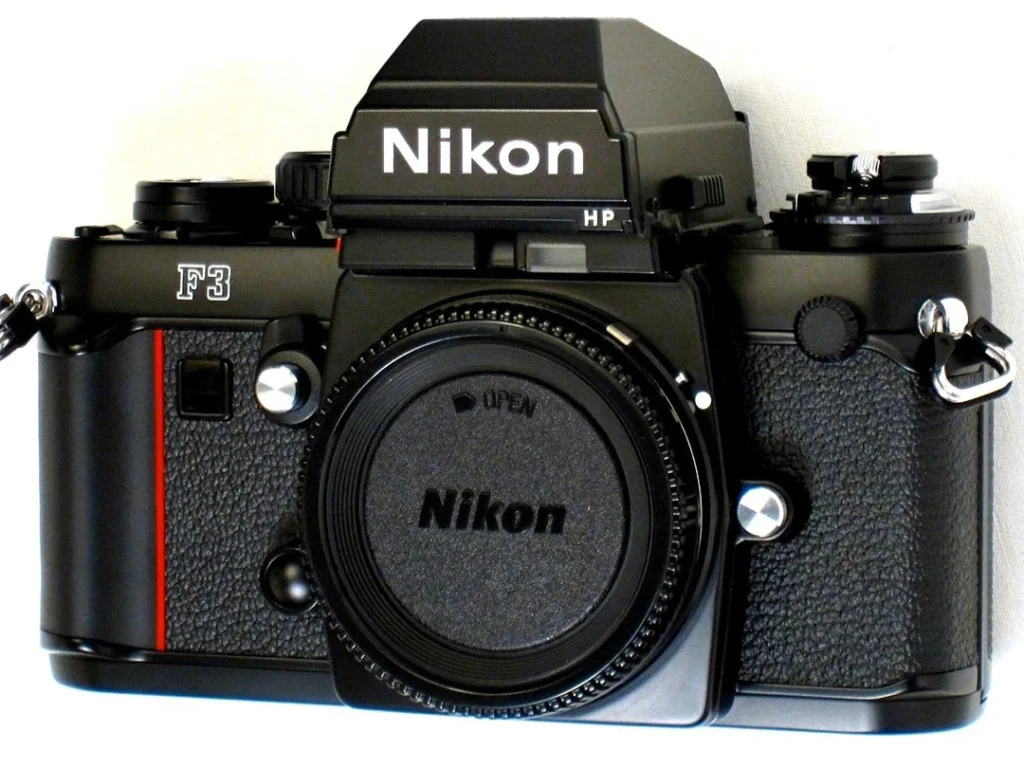
Specs and Features
The Nikon F3 is a professional-grade 35mm SLR camera known for its durability and reliability. It features a mechanically controlled, horizontal titanium shutter with speeds ranging from 8 seconds to 1/2000 second, plus Bulb mode. The camera has a center-weighted average metering system and is compatible with Nikon AI-S lenses. The F3 also includes a self-timer, depth-of-field preview button, and interchangeable focusing screens.
Why it’s Great for Beginners
While the Nikon F3 may seem intimidating for beginners due to its professional-level features, it is an excellent camera for those who are serious about learning photography. The F3’s rugged construction and reliable performance ensure that it can withstand the rigors of frequent use, making it an ideal long-term investment. The camera’s manual controls and compatibility with high-quality Nikon lenses also provide beginners with the tools they need to develop their skills and explore their creativity.
Yashica FX-3 Super 2000
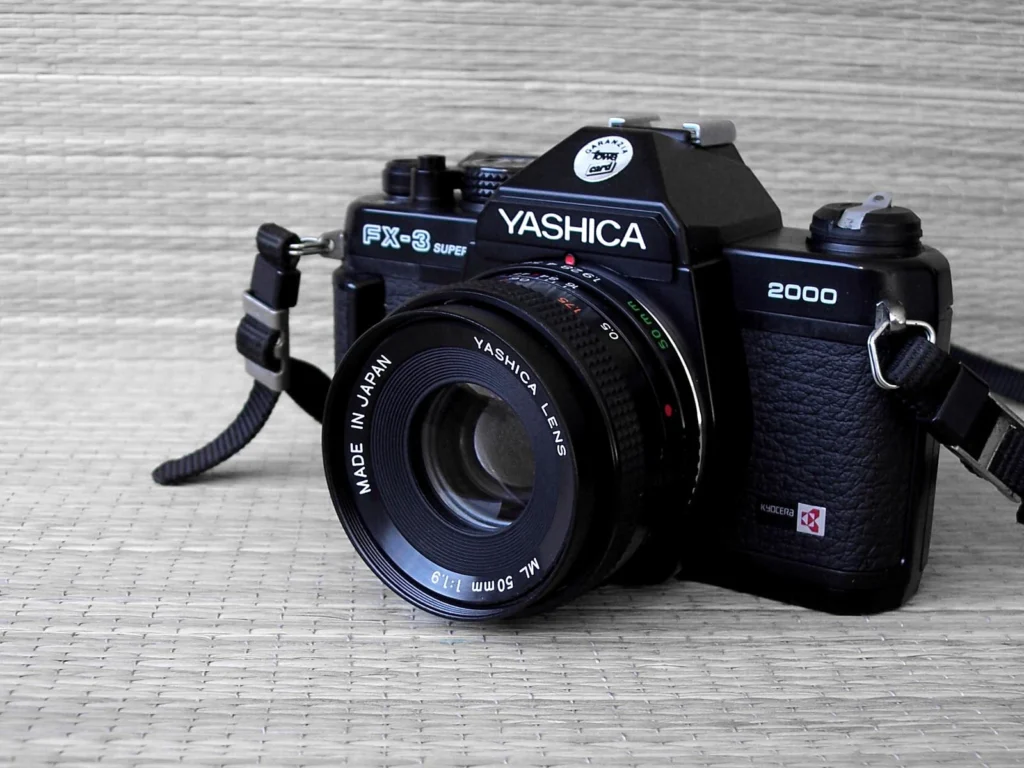
Specs and Features
The Yashica FX-3 Super 2000 is a compact and affordable 35mm SLR camera. It features a mechanically controlled, vertical metal shutter with speeds ranging from 1/2000 second to 1 second, plus Bulb mode. The camera has a center-weighted average metering system and is compatible with Yashica ML lenses. The FX-3 Super 2000 also includes a self-timer and a hotshoe for flash units.
Why it’s Great for Beginners
The Yashica FX-3 Super 2000 is an excellent choice for beginners on a budget who still want a high-quality, reliable camera. The camera’s compact size and lightweight design make it easy to carry around, while the straightforward manual controls allow users to learn the basics of exposure and composition. The FX-3 Super 2000’s compatibility with affordable Yashica lenses also makes it a cost-effective option for those just starting out.
How to Choose a Film Camera for Beginners
Factors to Consider
When choosing a film camera as a beginner, there are several factors to consider. First and foremost, think about your budget and how much you are willing to invest in your new hobby. Keep in mind that in addition to the camera itself, you will also need to purchase film, batteries, and potentially additional lenses or accessories.
Next, consider the type of photography you are interested in pursuing. If you plan on primarily shooting landscapes or still lifes, a camera with manual controls and a variety of compatible lenses may be the best choice. If you are more interested in street photography or capturing candid moments, a more compact and discreet camera may be preferable.
Ease of use is another important factor to consider. As a beginner, you’ll want a camera with intuitive controls and a straightforward design. Look for cameras with clear markings, a logical layout, and a comprehensive user manual to help you get started.
Finally, consider the availability of resources and support for the camera you choose. Selecting a popular model with a large user community can provide you with access to online tutorials, forums, and a wealth of knowledge to help you along your photography journey.
Tips for Selecting the Right Camera
Here are some tips to help you select the right film camera as a beginner:
- Read reviews and comparisons of different camera models to get a sense of their strengths and weaknesses.
- Visit a local camera shop or photography club to handle different cameras in person and get a feel for their ergonomics and build quality.
- Consider purchasing a used camera from a reputable seller to save money and potentially acquire a higher-quality model.
- Look for cameras with built-in light meters to help you achieve proper exposure, especially when you are first learning.
- Choose a camera that is compatible with a wide range of lenses to give you flexibility and room to grow as your skills develop.
Recommended Film Types for Beginners
Kodak TMAX 400 (Black and White)
Kodak TMAX 400 is a versatile black and white film that is perfect for beginners. This film has a wide exposure latitude, meaning it can handle a variety of lighting situations and still produce high-quality results. TMAX 400 also has a fine grain structure, allowing for sharp and detailed prints. The film’s contrast and tonal range make it an excellent choice for a wide range of subjects, from portraits to landscapes.
Fuji Superia 400 (Color)
Fuji Superia 400 is a great option for beginners looking to explore color film photography. This film offers natural color reproduction, fine grain, and excellent sharpness. Superia 400’s wide exposure latitude allows for flexibility in various lighting conditions, making it easier for beginners to achieve properly exposed shots. The film’s versatility makes it suitable for a variety of subjects, from everyday snapshots to travel photography.
Conclusion
Embarking on your journey into the world of film photography is an exciting and rewarding experience. By choosing the right camera and film, you’ll be well-equipped to explore your creativity and develop your skills. The 35mm cameras we’ve highlighted, such as the Pentax K1000, Canon AE-1, and Nikon FM10, offer the perfect combination of simplicity, reliability, and room for growth.
As you dive into film photography, remember to be patient with yourself and enjoy the process of learning. Each shot is an opportunity to experiment, make mistakes, and discover your unique photographic style. Don’t be afraid to ask questions, seek advice from experienced photographers, and immerse yourself in the rich history and community surrounding film photography.
So, dust off that old camera or invest in a new one, load up some film, and start capturing the world through your lens. The journey may be challenging at times, but the satisfaction of holding a carefully crafted print in your hands or sharing your work with others will make it all worthwhile.

